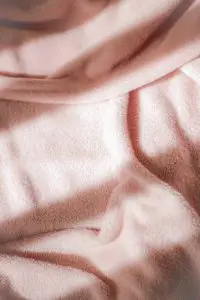Introduction
The textile industry is an ancient one that has existed for several millennia among humankind. It is a multi-billion dollar industry that will continually flourish because of the unending global demand for textiles. Silk and cotton are among the top raw materials in the textile industry due to their extensive uses worldwide. Hence, this article aims to give a detailed comparison of silk vs cotton.
- Silk and Its Development
- Cotton and Its Development
- The Detailed Comparison
Silk and Its Development
Silk is a naturally grown fiber that is rich in protein. It is primarily made of fibroin and is chiefly manufactured from insects to create cocoons. Silk has a glimmering look because its fiber’s structure is like a prism. The material redirects every ray of light set on it, making it look colorful.
Its Brief History and Use Cases
The origin of silk can be dated back to ancient China at the tail end of the Stone Age. A princess known as Lingshi found the existence and use of silk around 4000 BC. Only the royals used it when it was first adopted because it was highly regarded and set apart for only the elites. China dominantly manufactured and used the clothing material until 3000 years later, at the advent of the Silk Road. Years after the Silk Road’s creation, silk production spread to other parts of the earth. Although there is a tremendous global demand for silk, its cultivation and knitting is a long and strenuous activity. While it aids rural regions in lessening poverty, it is primarily produced among the Chinese and Indians. According to the International Sericultural Commission, about 1 million silk workers make up the Chinese population. Other countries like Thailand and Brazil are significant manufacturers.
The Production Process
Although silk is chiefly developed from silkworms(also known as moth caterpillars), some insects that produce silk include beetles, flies, ants, lacewings, crickets, and spiders. The creation process of silk is termed “Sericulture.” Usually, a species of moths known as Bombyx mori is made to lay over 450 eggs in about five days. These eggs are preserved between 64°F and 77°F and eventually hatched to form silkworms. These worms are cultivated on the leaves of the mulberry tree and multiply over 9,800 times within 30 days. The worms begin to create cocoons which are then placed in heated water to extract the fibers. Each cocoon can produce up to about 920 meters of thread, and these threads help create yarns. Alternatively, these cocoons can be dissolved in chemicals that make the lines stiffer than usual.
Cotton and Its Development
Cotton is a smooth and soft fiber known to grow on bolls or shielding covers that lay over the cotton seeds. While cellulose is its principal constituent, other significant components include water, wax, pectin, and fat. You can find it in North America, South America, India, and some parts of Africa. Usually, its fibers are churned into either threads or yarns to produce long-lasting, wicking, and soft textiles.
Its Diverse History
Cotton has different historical backgrounds, originating from several regions from the Neolithic period.
Southern Asia has the oldest evidence of cotton use from ancient times. Its cotton chronology is dated to almost 6000 BC in historic India, which is today referred to as Balochistan in Pakistan.
The American continents also have a cotton account from the fifth millennium BC. However, archaeologists do not fully accept this claim. However, Mexican Cotton has been validated to have begun within the 3rd and 2nd millennium BC. During this period, Mexican citizens produced, dyed, and knitted cotton. Peruvians also made cotton around the fourth millennium BC. In Peru, Cotton was designed into nets and traded as fishing materials to neighboring regions.
Iran, formerly known as Persia, has a historical background that shows traces of cotton usage around 500 BC. There is also information that reveals cotton’s use in Iran before it was Islamized.
Sudan has traces of cotton in its history. It began in the Kush Kingdom around the 5th millennium BC. However, in 400 BC, cotton advanced, and the Sudanese began to churn and knit cotton at outstanding levels. They also made great wealth by exporting textiles.
China has a more recent origin of cotton in its history. Studies reveal that the Chinese began creating cotton in the 2nd century AD under the Han empire. During this time, cotton was predominantly grown in Yunnan, southern China.
The Cotton Industry
Cotton is an essential commodity in the textile sector. It has many uses and has remained indispensable since its foremost discovery. A significant reason for its extensive use is the creation of cotton gin. This discovery lessened its production expenses, making the cotton enterprise grow massively before WWI. Japanese companies further escalated their production, making Japan the largest cotton producer globally. However, the wars reduced production and availability drastically. Currently, there are over 24 million tonnes of cotton manufactured annually worldwide, with the Indians being the hugest makers and the Americans the most prominent exporters.
The Detailed Comparison Between Silk and Cotton
Strength
Silk is a naturally firm fiber with outstanding tensile quality. Its high strength enables it to resist high pressure. On the other hand, cotton is also strong; but moisture significantly affects its strength. According to studies, it has an increased strength of 20% when wet compared to dry.
Silk requires a good level of care to conserve its durability for an extended period. It is noteworthy that silk threads in their natural form are more potent than cotton threads. Hence, when considering silk vs cotton in several conditions, cotton is considered to be stronger.
Usability and Comfort
Silk bed sheets have fewer chances of causing facial wrinkles and hair damage. This property is due to its natural smoothness. If they are correctly handled, they can remain in good shape and be used for decades. Silk’s beneficial effects on the human skin come from its natural possession of amino acids. These acids help rejuvenate the human hair and repair the skin. Therefore, silk users can comfortably slide and turn on their beds without breaking their hair or ruffling their skins.
On the other hand, cotton is smooth and soft; however, it leaves impressions on the skin after a while due to its coarseness. In essence, silk is the go-for material when evaluating silk vs cotton in terms of skin nutrition and hair protection.
Silk is widely known for its insulating effect and breathability when in use. Although breathable, cotton is not structured to lock the heat in. This is why silk is mainly used for cold periods and is comfortable during hot weather.
Silk naturally has slight tendencies to cause allergies. Also, it is a sound emitter of sweat instead of an absorber. This sweat emitting property keeps bacteria away from the skin and reduces its washing frequency. An example of its use case is face masks. In contrast, cotton is not non-allergenic, which leaves its users exposed to different lines of allergies. Also, cotton absorbs and locks in sweat, making its users prone to contracting germs and diseases. In silk vs cotton safety analysis, silk is safer.
Laundry Compatibility
Silk is preferably dry cleaned, rather than being machine or hand washed. This is because silk materials are susceptible to fading, and washing them with hands or machines can make them lose their colors quickly. Cotton, on the other hand, can be cleaned with washing machines. However, it is advised to look at the material label before washing.
Silk dries more quickly than cotton; just as earlier stated, silk releases moisture fast, while cotton absorbs moisture. A person who gets wet in the rain with silky clothes has a higher chance of getting dried and warm quickly than one who gets wet with cotton clothes.
For silk materials, it is better to air dry them rather than using other means of drying. This is because of how delicate silk is. Also, hot temperatures like direct sunlight and tumble driers can cause the cloth to lose its color, shrink, or get damaged. In many conditions, cotton can be tumble-dried. However, if the fabric is entirely cotton, it can shrink. In some cases, it is advised to air dry cotton fabrics.
Silk materials are not compatible with ironing. Steaming is a preferable alternative for silks. Cotton materials, however, can be ironed. They are better ironed when damp.
Material Cost
Silk materials are generally expensive due to their luxurious uses. They are sold based on their momme weights. Usually, 20 momme and above silk materials are regarded as highly elegant because of their high density and opacity. Many luxury material buyers do not see high-priced silk fabrics as too pricey because of their long-term durability.
On the other hand, cotton materials are sold by their thread counts, unlike silk fabrics sold by their weights. Luxury cotton materials usually have over 600 thread counts, and they last for a very long time if properly taken care of. Therefore, considering the material cost of silk vs cotton, cotton is more budget-friendly.
Natural Origin
Although both of them stem from nature, they come from different classes. Silk is extracted from animals, while cotton is extracted from plants.
Use Cases
Silk and cotton have various uses, ranging from pocket squares to suits, bedsheets, denim, curtains, pillows, pillowcases, upholsteries, and ties. However, cotton has extra use cases which involve the production of flannels and canvases.
Stretchiness
Silk is known to have low stretching properties because it is delicate and can get damaged when stretched. However, cotton has better chances of survival after stretching compared to silk.
Global Production
According to a study by the International Sericultural Commission in 2020, about 92,000 tonnes of silk were produced. And according to The World Counts, 27 million tonnes of cotton are produced per year. These statistics show that cotton is more available compared to silk. They also reveal that cotton has higher global production in the textile industry than silk in the silk vs cotton comparison.
A Great Online Class: Color Theory for Textile Projects by Domestika
If you are interested in learning more about how you can create a successful name for your business, we recommend taking a look at the online class “Color Theory for Textile Projects”.
The course is currently under promotion, but you can use the discount code: T_BROWNLEES-PROMO to get an additional 10% discount on your purchase.
This online class offered by Domestika, at a very inexpensive price covers all you need to know to develop your textile project by leveraging color theory to create the perfect color palette. If you apply to the course through the link below you’ll be supporting 440 Industries, and we thank you for it!
Conclusion
Silk and cotton are very significant in the textile sector, and they will continue to serve a lot of uses. This article reveals that although both materials can last long, silk is firmer than cotton during use. Nonetheless, cotton is more resistant to harsh conditions compared to silk. Although silk has a lower production level, it has considerable health benefits than cotton, which is more available.







